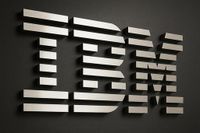International Business Machines Corporation (IBM) is riding high as autumn 2025 unfolds, with its stock price hovering around $289 and flirting with multi-year highs. After years in the tech industry’s middle lane, the company is in the midst of a striking transformation, powered by a bold pivot to artificial intelligence (AI), hybrid cloud computing, and quantum technology. According to Yahoo Finance and ts2.tech, IBM’s share price has surged nearly 28% year-to-date—more than doubling the S&P 500’s approximate 13% gain for the same period. This remarkable rally has pushed IBM’s market capitalization close to $265 billion and lifted its price-to-earnings (P/E) ratio to about 45, well above its historical average, signaling high investor expectations.
The surge isn’t just about market sentiment. Under CEO Arvind Krishna, IBM has reoriented itself as a leader in enterprise AI and cloud, with a $7.5 billion “book of business” in generative AI engagements, as reported by ts2.tech. The company has also pledged a massive $150 billion five-year U.S. investment plan to expand domestic production of AI-centric mainframes and quantum computing hardware, reinforcing its commitment to deep technology innovation.
IBM’s recent headlines have been dominated by two major announcements. On October 1, 2025, the company revealed a strategic partnership with Advanced Micro Devices (AMD) to build a cutting-edge AI training supercluster for Zyphra, an open-source AI startup. According to IBM’s Newsroom, the deal will see IBM Cloud hosting a vast array of AMD’s Instinct MI300X GPUs, enabling Zyphra to train “frontier” multimodal AI models in pursuit of developing Maia, an open-source superintelligence agent. Zyphra’s CEO, Krithik Puthalath, said, “This collaboration marks the first time AMD’s full-stack training platform…has been successfully integrated and scaled on IBM Cloud, and Zyphra is honored to lead the way.” The move is notable for challenging Nvidia’s dominance in AI hardware and for highlighting IBM Cloud’s ability to support some of the largest generative AI workloads in the industry.
Just a day later, on October 2, IBM launched Granite 4.0, a new family of open-source enterprise AI language models. Granite 4.0 introduces a novel hybrid “Mamba + Transformer” architecture, which IBM claims reduces memory requirements by about 70% compared to traditional transformer-only models. According to IBM’s official release, this breakthrough enables businesses to run sophisticated AI models on much cheaper hardware, including AMD’s MI300X GPUs, slashing the cost of AI deployments. Notably, Granite 4.0 models are open-sourced under the Apache 2.0 license and are the first open AI models to achieve the new ISO 42001 AI governance certification—underscoring IBM’s emphasis on trust and security in enterprise AI.
IBM’s stock performance reflects these innovations and the market’s renewed confidence. The stock closed at $288.37 on October 3, 2025, just shy of its 52-week peak of around $296, a level briefly reached after news of a quantum computing breakthrough with HSBC sparked a 5% rally in late September. Over the past three years, IBM shares have roughly doubled, a dramatic turnaround for a company that spent much of the last decade lagging behind its peers. The company’s annual dividend of $6.72, yielding about 2.3%, extends an impressive 29-year streak of dividend increases, cementing its status as a Dividend Aristocrat.
Yet, Wall Street’s outlook on IBM is a study in contrasts. While the company’s transformation has won applause, the consensus analyst rating hovers around “Hold,” with a 12-month price target averaging $270–$275—slightly below current trading levels, according to MarketBeat and ts2.tech. Bulls argue there’s still room for upside if IBM’s AI and cloud initiatives outperform expectations; some top analysts have set targets north of $300. However, skeptics point to the company’s rich valuation and still-modest growth rates. As Reuters noted, “There’s just not a lot of room to miss” on execution, particularly after the stock’s rally. This became clear when IBM’s shares dipped 5% following Q2 earnings, despite beating estimates overall, because software sales fell just shy of forecasts.
IBM’s Q3 earnings report, set for October 22, is widely anticipated. Analysts forecast earnings per share of $2.95 to $3.00 and mid-single-digit revenue growth. The company has guided for robust free cash flow above $13.5 billion for 2025, up from an initial outlook of $10–$10.5 billion, and boasts a sizable $115 billion backlog in software and consulting. The new z16 mainframe systems, equipped with AI acceleration, are providing a temporary boost this year, but the real test will be whether IBM’s newer businesses—cloud, AI, Red Hat, and quantum services—can accelerate growth further into 2026 and beyond.
Competition remains fierce. In cloud computing, IBM Cloud holds only about 2–3% market share, dwarfed by Amazon AWS and Microsoft Azure, which together control more than 50%. IBM is leveraging its strength in hybrid cloud (on-premises plus public cloud) and the Red Hat OpenShift platform to carve out a niche, even as AWS and Azure grow at nearly 20% annually. In AI, IBM faces off against tech titans like Microsoft, Google, and Amazon, all of whom are investing heavily in generative AI. IBM’s approach—offering open, efficient, and trusted AI models for enterprise use—differentiates it from competitors focused on massive consumer-facing AI systems.
Quantum computing is another arena where IBM is making waves. The company operates the world’s largest quantum cloud network and has achieved real-world breakthroughs, such as helping HSBC improve bond trading by 34% using IBM’s quantum system. IBM’s leadership in quantum is reinforced by its ongoing partnerships with research institutions like Japan’s RIKEN and its ambitious roadmap to deliver a 4,000+ qubit quantum computer by 2026.
Leadership continuity is also a hallmark of IBM’s current era. On September 30, the company announced Dr. Jay Gambetta, a veteran quantum computing scientist, as the new Director of IBM Research. This move signals stability at the top and a continued focus on quantum innovation.
Despite all the progress, IBM’s future is not without risks. The company’s high valuation means any missteps—such as a slowdown in AI adoption, increased competition, or macroeconomic headwinds—could trigger sharp pullbacks. As ts2.tech put it, “IBM’s high valuation means any misstep could spook the stock… Conversely, breakthroughs like the HSBC quantum trial or large enterprise AI deals could drive further gains.”
Ultimately, IBM’s transformation is well underway, but the stakes are high. The next few quarters will be crucial in demonstrating whether Big Blue can sustain its momentum and truly reclaim its place among tech’s elite. For now, the company stands as a fascinating case study in corporate reinvention, balancing its storied legacy with a bold leap into the future of AI, cloud, and quantum computing.

